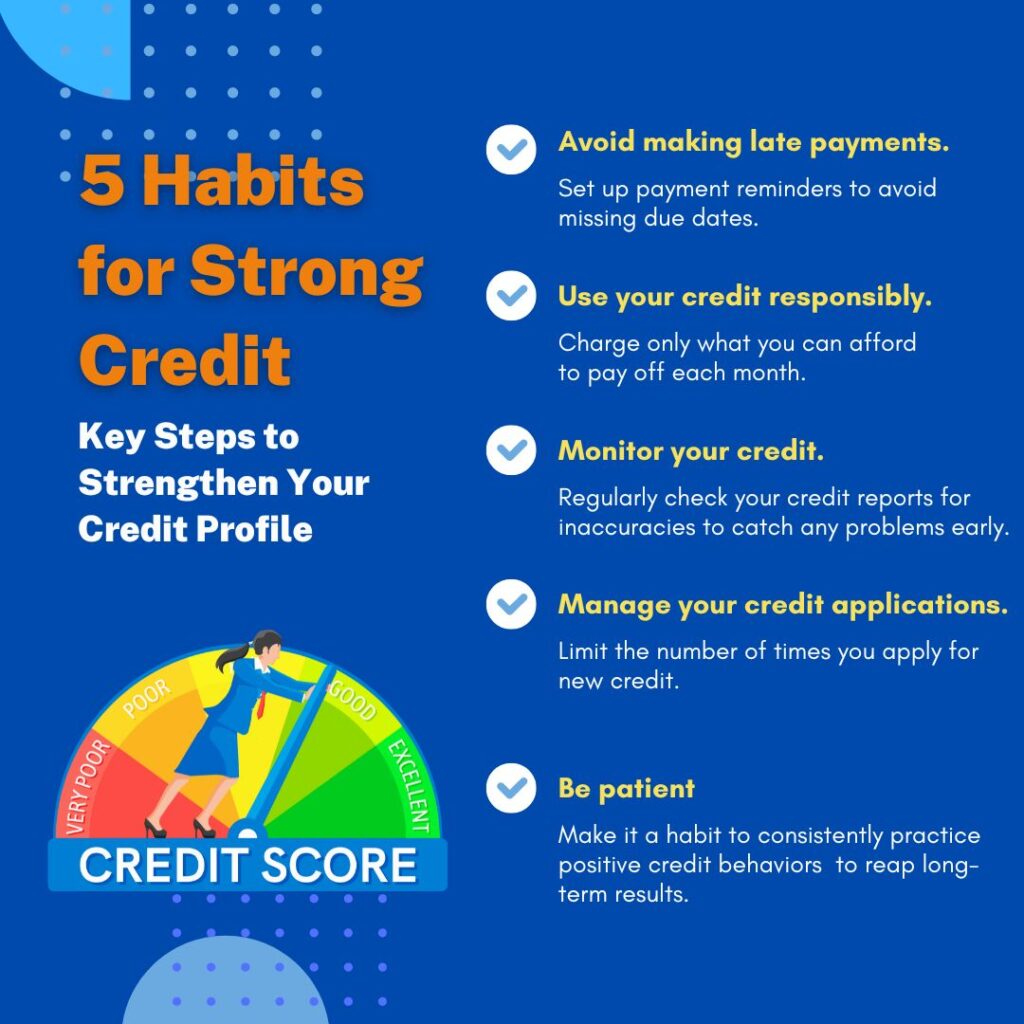Credit repair isn’t just about fixing the inaccuracies in your credit report. It’s also about actively building a strong credit foundation. In this chapter, we’ll go over the steps you can take to build a positive credit history. Practices like making on-time payments and keeping your credit utilization low will take you closer to a healthier credit profile.
Payment History: On-Time Payments and Their Impact
Your payment history is the most important aspect of your credit health. It shows how reliable you are in dealing with your financial obligations. Consistently making on-time payments is crucial for building a positive credit history. It raises your credit score as well.
Here’s how on-time payments impact your credit:
- Positive Impact: Timely payments demonstrate responsible financial behavior. It shows lenders that they can rely on you to repay borrowed funds.
- Negative Impact: Late payments, on the other hand, can lead to negative marks on your credit report and lower your credit score. The more recent the late payment, the worse it can negatively affect your score.
Credit Utilization: Managing Credit Card Balances
Credit utilization is the ratio of your credit card balances to your credit limits. It simply tells you how much of your available credit is currently being used. It’s also a significant factor in your credit score calculation. Keeping your credit utilization low is essential for maintaining a healthy credit profile.
Here’s how credit utilization affects your credit:
- Low Utilization is Positive: Ideally, you should aim to keep your credit utilization below 30%. A lower utilization rate gives the impression that you’re not overly reliant on credit and can manage your finances responsibly.
- High Utilization Can Be Detrimental: High credit card balances relative to your credit limits can indicate financial stress. Strive to pay down balances and avoid maxing out your credit cards to keep this number down.
Length of Credit History: Building a Solid Track Record
The length of your credit history is another crucial credit score component. Lenders favor borrowers with a longer credit history, as it provides a more comprehensive view of their financial behavior.
Here’s how the length of your credit history matters:
- Positive Impact of Age: The longer your credit accounts have been open, the more positively it affects your credit score. This factor rewards your established track record of responsible credit use. As a tip, it is a good idea to keep your oldest credit accounts open even if you do not use them regularly.
- New Accounts and Average Age: Opening new credit accounts can temporarily reduce the average age of your credit history. Keep an eye on how often you open new accounts, especially if you’re working on building your credit.
Building Positive Credit Habits

To build and maintain a strong credit profile, incorporate the following habits into your financial routine:
- Set Up Payment Reminders: Never forget when your payables are due. Use payment reminders or automatic payments to ensure you never miss a due date. Adding this simple step into your financial routine can significantly boost your financial profile.
- Use Credit Wisely: Use your credit cards responsibly. This means charging only what you can afford to pay off each month.
- Monitor Your Credit: Regularly check your credit reports for inaccuracies and signs of potential fraud.
- Limit New Credit Applications: Applying for new credit too frequently can negatively impact your credit score. Be selective and intentional about new credit applications.
- Be Patient and Persistent: Building good credit takes time. Consistently practicing positive credit behaviors will yield long-term benefits.
Remember, building positive credit isn’t just about raising your credit score. It’s more about establishing a strong financial foundation. By consistently making on-time payments, managing your credit use, and nurturing a lengthy credit history, you’ll be well on your way to achieving a more secure and promising financial future.
In the next chapter, we’ll explore how to navigate the challenges posed by negative entries on your credit report. We’ll provide insights on how to address issues like negative entries and collections to set you on the path toward credit repair success.
Next: Chapter 7: Dealing with Negative Entries, where we’ll guide you through strategies for resolving and managing negative marks on your credit report. As you tackle these challenges, you’ll be empowered to take control of your credit journey.